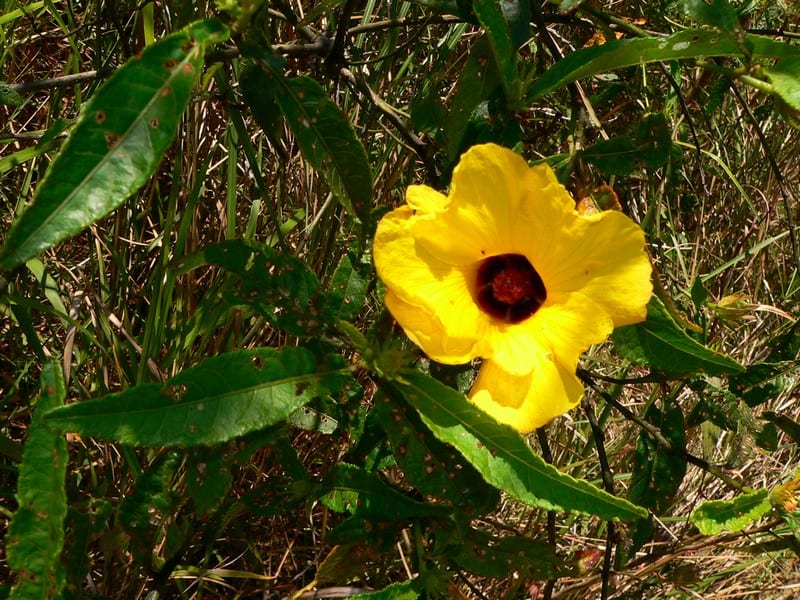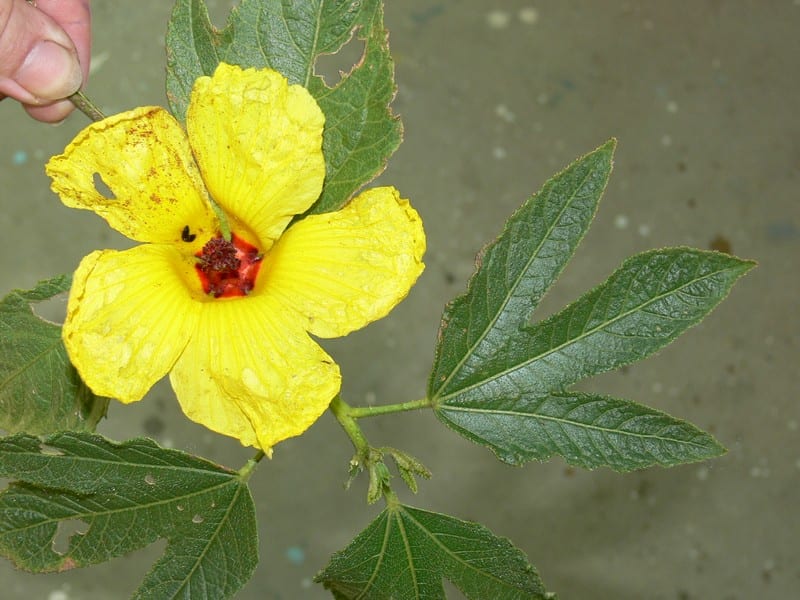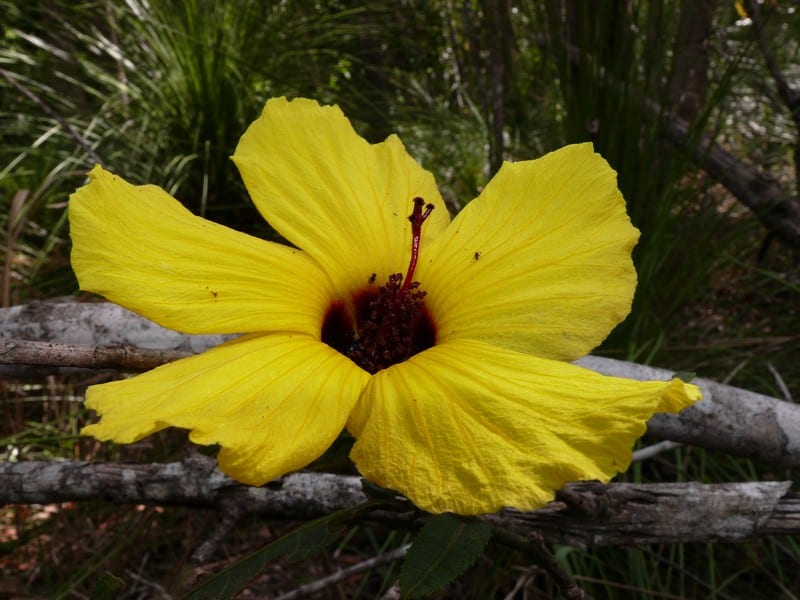Native hibiscus
Hibiscus heterophyllus subsp. heterophyllus, Fam. Malvaceae






A shrub or small tree from 2-6 metres. Aborigines used the white, strong and fine fibre to make dilly-bags. They also use many components of the plant as a food source.
| Weed Category: | |
| Weed: | No |
| Form or habit: | Shrub, Small tree |
| Family: | Malvaceae |
| Leaf: | Simple Alternate Alternate, simple or three lobed; margins are finely toothed. The leaves and stems are somewhat prickly hairy. |
| Flower conspicuous: | Conspicuous |
| Flower colour: |
White, Yellow, Maroon, Pink |
| Flower description: | Large and showy up to 15cm in diameter. Petals are yellow, white or pink with maroon centres. Yellow being the most common in this region. The flowers normally open about mid-morning and close by mid-afternoon. |
| Fruit conspicuous: | Conspicuous |
| Fruit colour: |
Brown |
| Fruit: | Dry |
| Fruit description: | Brown fruit, rosella-like, 5 valved capsules containing dark brown seeds. |
| Habitat: | Gallery (riverine or riparian) forest, open forest, woodland. |
| Distribution | Eastern Queensland and New South Wales and the Northern Territory. |
| Food source for: | Early settlers used the fruits to make ‘rosella’ jam. Attracts many species of insects; larval food plant for some moth species. |
| Toxicity: | No toxicity known |
| Origin: | Australia |
| Notes: | |
| Information sources: | Melzer R. & Plumb J. (2007) Plants of Capricornia. |